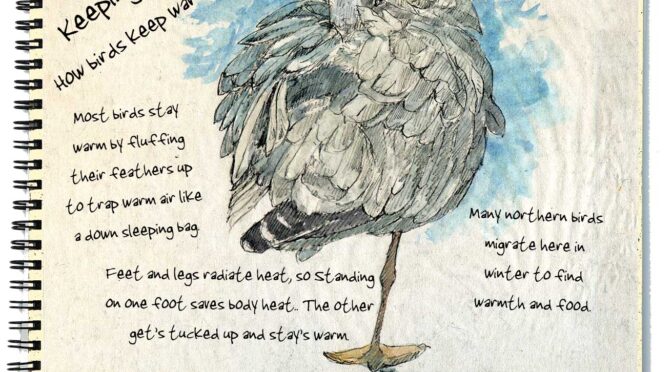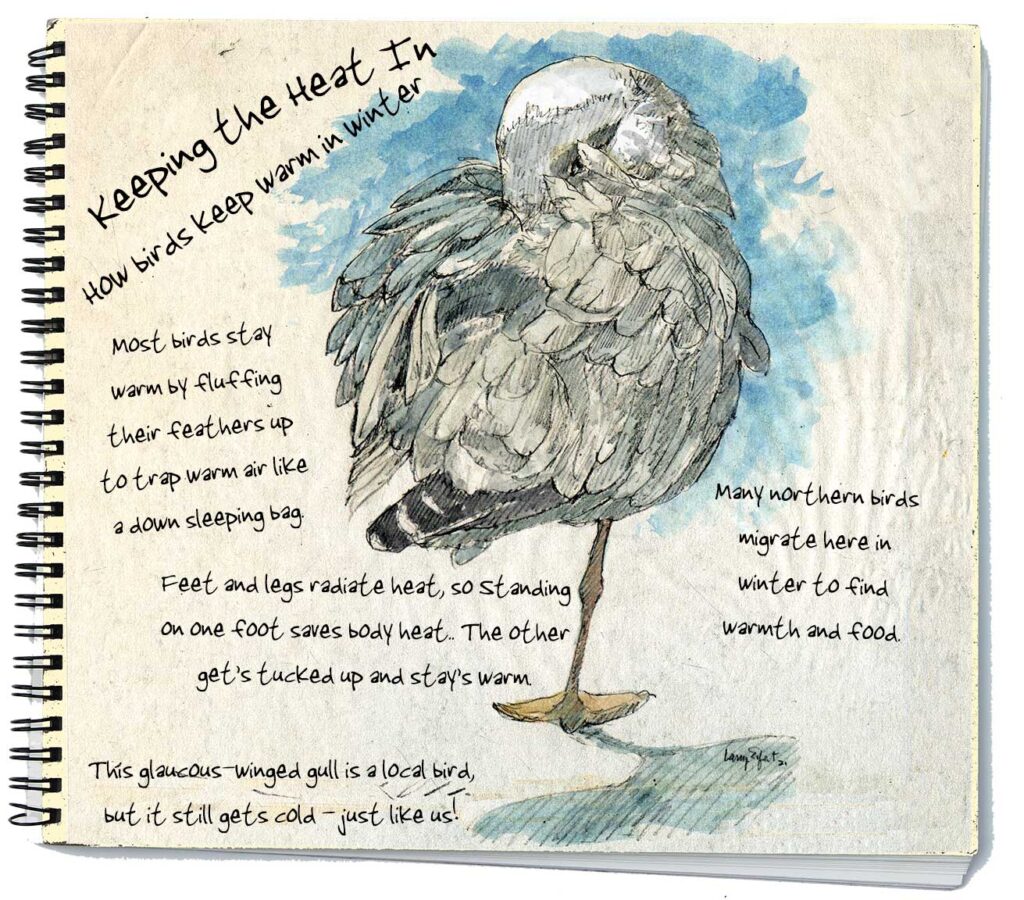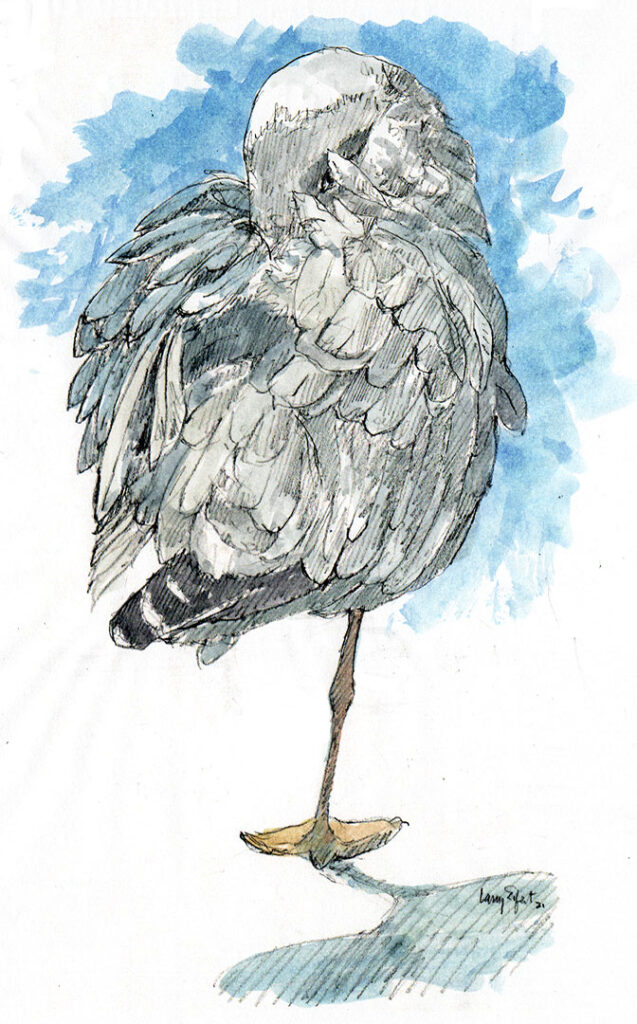
Baby, it’s cold outside. But compared with some other places, the Arctic, Alaska – the Salish Sea has a fairly balmy winter. So balmy that many thousands of birds migrate here to spend winters in relative comfort. It’s still cold, but birds have adapted and evolved to help them survive our winters. On average, a bird’s body temperature is 104OF, so they’re even more vulnerable to cold than we are. Probably their biggest adaptation is an innate knowledge that if they fly south, it’ll be more comfortable. And there are other physical adaptions to get them to spring. Most birds have the ability to control each one of those thousands of feathers individually – so they can fluff their feathers up to trap warm air between feathers and skin, creating a down coat. You may have seen birds ‘fluffing up’ this time of year in periodic motions.
Most birds also have feet and legs that aren’t as warm-blooded as their bodies. Instead, those parts are mostly bones and skin, so less heat is required than to warm fatty tissues. Legs and feet also have an intricate network of unusual intertwined blood vessels that is a built-in heat transfer system. This creates a counter-current of warm blood passing by the cold returning blood, a heat exchange system that keeps the heat in their bodies’ core instead of trying to keep external parts warm, too. When the cold blood from feet, now somewhat pre-warmed arrives in the core, it’s already back up to nearly body temperature. Other methods: when birds sleep, their bills get tucked under feathers to keep that part warm, but also to inhale warmer air into their lungs, again saving the effort to keep their body core warm. This of it as a down muff. Take a moment on that cold winter morning marina walk and watch these guys. See any ‘fluffing’ going on?
Larry Eifert paints and sails the Pacific Northwest from Port Townsend. His large-scale murals can be seen in many national parks across America, and at larryeifert.com.


